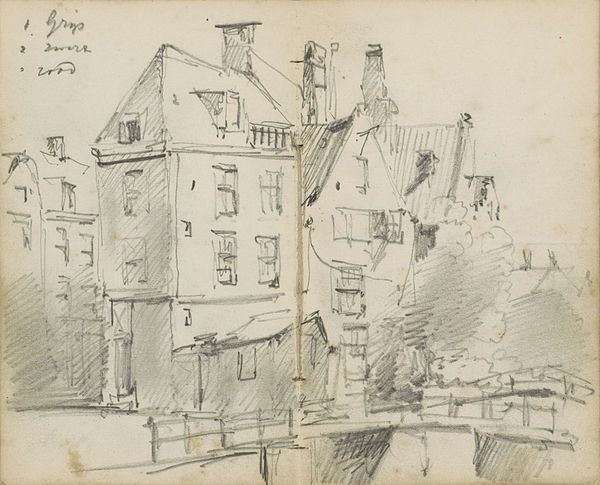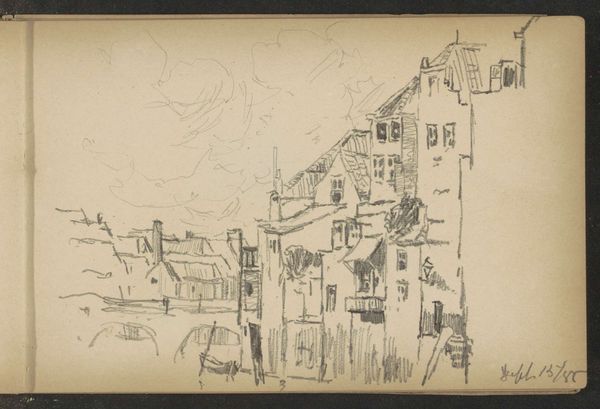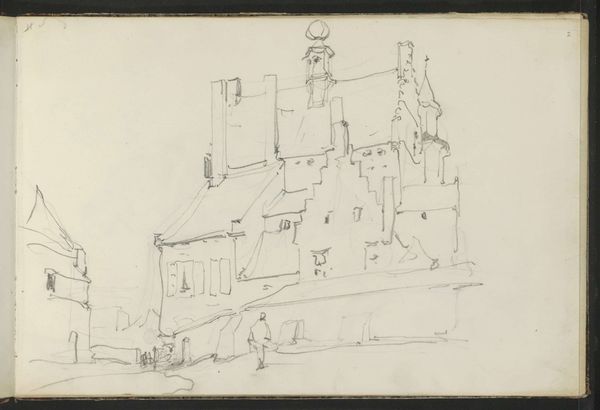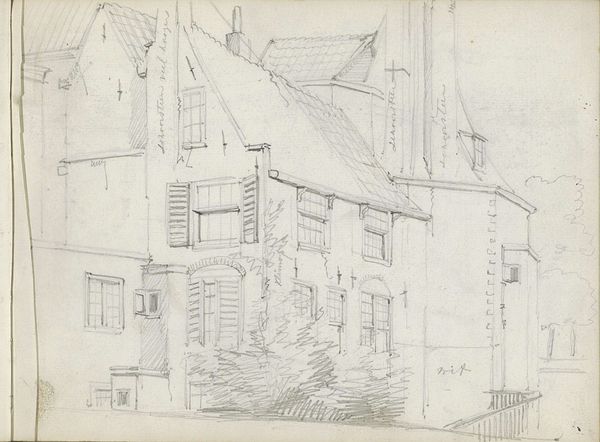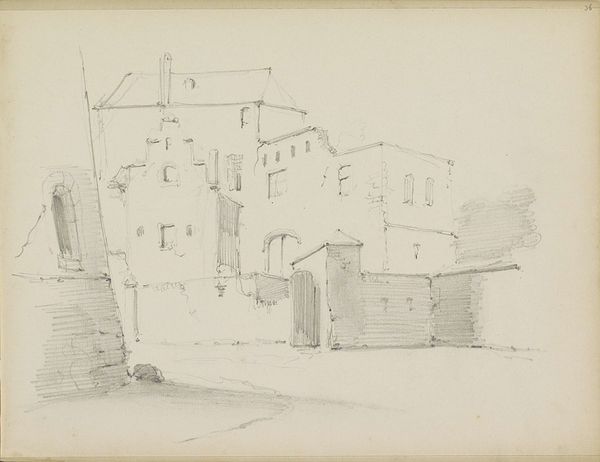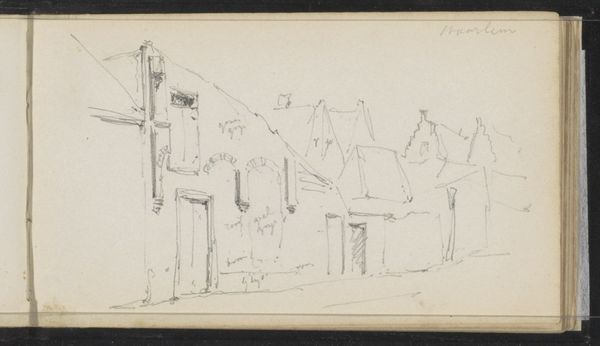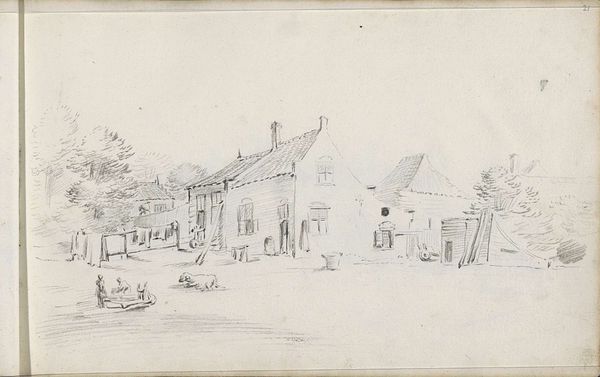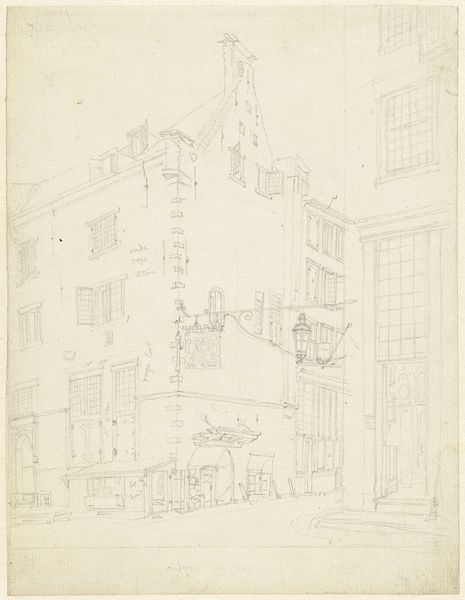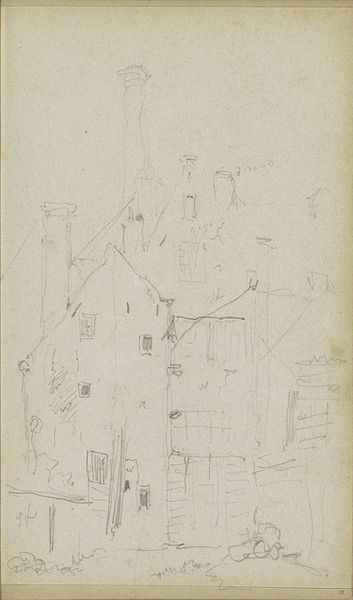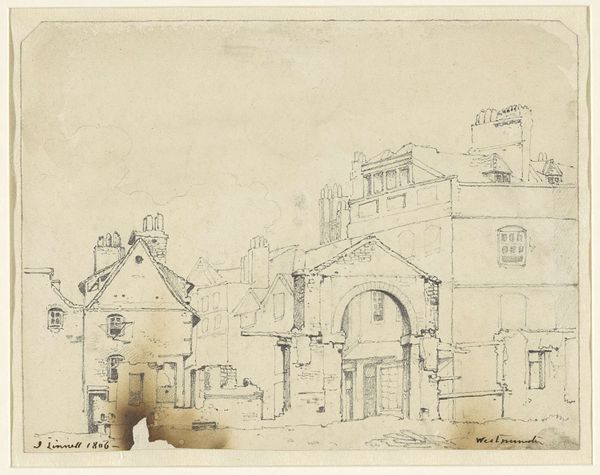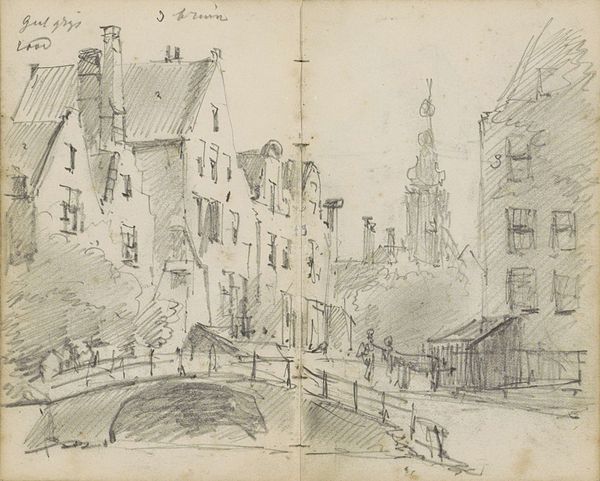
drawing, pencil
#
drawing
#
dutch-golden-age
#
landscape
#
pencil
#
cityscape
#
street
Copyright: Rijks Museum: Open Domain
Curator: This sketch offers a glimpse into 's-Graveland through the eyes of Willem Koekkoek. Executed between 1849 and 1895, it captures a quiet "Street on the Water." The artist used pencil on paper. Editor: My first thought is that it’s delicate. The softness of the pencil work creates a hazy atmosphere. I'm also curious about the material constraints of rendering architecture with what looks like just one, maybe two, grades of pencil. Curator: The hazy atmosphere, I think, really draws our attention to the idea of collective memory and a sense of nostalgia. Street scenes in Dutch Golden Age style often serve to establish a communal identity. Notice how each rooftop has an identifying word in beautiful lettering... Editor: That is an interesting detail – labeling individual parts. I’m intrigued by the hand of the artist evident here. This isn't photorealism. This is the labor of representing an entire village with pencil and paper, giving us insight into both the subject, of course, and how it’s been made through material conditions and means. Curator: Indeed, these inscriptions perhaps served some specific symbolic or personal purpose for the artist. Buildings frequently signify collective identity, or lineage, and these markings are clearly meant to reinforce this understanding. In urban symbolism, buildings are powerful! Editor: I'm curious about who would buy or consume a pencil drawing such as this. Was it meant to be a preparatory sketch, or an artwork unto itself? The lines, however economical, still carry so much detail. Look at how the artist defines the reflections of the buildings in the water. It speaks to the labor, the hand of the artist at work in a commercialized environment. Curator: Viewing "Street on the Water," it seems, invites us to meditate on how the symbolism of community evolves when filtered through individual artistic interpretation. Editor: And for me, the intimacy of Koekkoek's sketch encourages a consideration of how much meaning we assign to these historical objects and artistic production more generally.
Comments
No comments
Be the first to comment and join the conversation on the ultimate creative platform.
